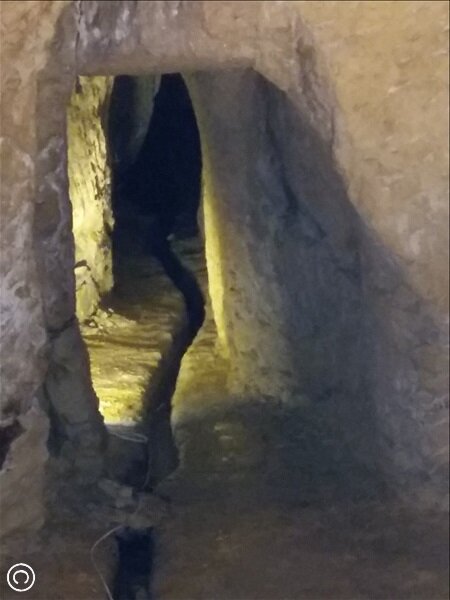Old history map of Valletta
Introduction to Valletta
The city of Valletta was built after the Great Siege of 1565, a monumental moment in the Maltese history, when the Ottoman Empire tried to capture the island.
A heroic fight ensued when the Knights of the Order of St John and the Maltese population decided not to capitulate, but to fight for their freedom. Against all odds, the Ottomans had to raise the siege and return to Istanbul unsuccessfully. During the siege, the area of the Three Cities was almost totally destroyed, and the Order was looking for a new location to build a new capital city. In the past, they had already looked at the peninsula Scibberas, opposite the Three Cities.
However, they decided against because it would be too expensive. After the Great Siege, the Order had no other option than to build there. On 28th March 1566, the first stone of the new city of Valletta itself was laid, of a building that would become the Our Lady of Victories Church.
Within five years, some five km of fortification walls were constructed around the peninsula, with the help of paid Maltese workers and Ottoman prisoners of war. An Italian architect, Francesco Laperelli de Cortona, designed these city walls, who was on loan to the Order by courtesy of Pope Pius V. Laparelli's.
The location was chosen on the peninsula between two harbours. The city plan of Valletta was based on the Renaissance grid plan, similar to what the Romans had used in the past. The idea was that the city would have only straight streets, so that troops could be transferred as fast as possible from one side to the other. For this reason, the streets of Valletta have no gardens and monumental staircases.
Laparelli's pupil, the Maltese military engineer and architect Girolamo Cassar, was responsible for many of the buildings which were erected within the new city's walls. There was a continuous construction in the city and many of the buildings have been labelled by history as 'sensational.
The already built Ford St. Elmo, which is situated at the far end of the peninsula, was integrated into the town.
Valletta became a fortification with many secrets to mislead the enemy and give them false illusions.
In the middle of the town one can find the richly decorated church (Baroque) St. John's Co-Cathedral and also the Grandmaster's Palace, which was one of the first buildings in Valletta.
At the beginning of the 17th century painter Michelangelo Caravaggio lived in Malta for some time. During that period he painted the Beheading of St. John the Baptist. This painting can be found in the St. John's Cathedral in Valletta.
More than 25.000 people can live in Valletta but only about 6.500 are living there nowadays.
The two main important streets of Valletta are Republic Street and Merchants Street. Both are parallel to each other and run from City Gate to St Elmo on the other side of the peninsula. Republic Street and Merchants Street are built on top of the peninsula, and are for the greater part flat, while at the end of the peninsula, these streets show a rather steep decline towards Forts St Elmo and the sea. In both streets one may find many shops, museums and churches, although each has its own character.
Republic Street is the main thoroughfare and is the largest shopping street. In Merchants Street one may find, besides many fine shops, also a good number of government departments. The city is relatively small and measures 700 m x 1 km and has 6,500 inhabitants. A large part of the city centre is pedestrianized.
Underneath Valletta there is a canal system so the enemy could be surprised during an occupation. There is also a canal for the water-supply and a canal to drain the faeces which ended in the sea. To hoist up water one let down a rope in the shaft which ended in a canal. Next to the water shaft was another hole where one could relieve oneself and that would end up in the canal of faeces.
Address and street / location can be found on our map, click on Guide in the menu bar and you will get a map with markers. |
Additional information
Photos below: Under Valletta

This "Valletta" page is part of “The Malta Magazine”.
This magazine is for every resident and visitor to the country of Malta. But is also educational and for anyone interested in Malta. The Malta Magazine highlights the past and present of specific subjects and/or places of interest with the help of extensive information and photos.
As a tool during your journey of discovery through Malta, you can use our information services free of charge. You can do this in two ways, via our website https://maltaguide.pro or our app depending on your operating system, Google Play or Apple Store. Both give you the same information.
“The Malta magazine” is the best, ultimate and most comprehensive magazine you can get of Malta.
The magazine is growing fast and will soon contain more than 350 interesting topics.
Find and discover interesting sights and discover the many historical secrets of the country Malta. Find all things to do and places of interest in your exploration.
“The Malta magazine” is also convenient whether you are walking, driving a car, or using the hop-on and hop-off bus trip, boat trip, etc.
“The Malta magazine” provides you with general information about the sights, Malta’s beauty, secrets, history and culture, its architecture, fortifications, etcetera and specific information as: what took place here?; When was it built and by whom?; What are the functions of all these.
“The Malta magazine” describes also religious subjects, museums, parks, places of interest, public toilets and much more useful information. Interesting texts set up by local experts and additional informative photos make this app distinctive.
“The Malta magazine” answers many questions and shows in an easy way to navigate way where the sights are located. A great landmap and citymap made specifically for you, is a great tool. You can immediately see where you are and where the sights are.
In this "Malta Magazine" you will find the location, address, opening hours and admission / entrance fee, general additional information and news about the spot.
Everything in “The Malta magazine” is easy to operate, without any knowledge and suitable for young and old.
“The Malta magazine” is free while you normally would pay for a guided tour, you may enjoy navigating through Malta on your own terms.
“The Malta magazine” is constantly maintained about: attractions which are closed due to renovation, changed entrance fees or opening times, etc. This maintenance costs a lot of money. However, it has been decided not to include annoying advertisements. The “The Malta magazine” has no hidden costs.
The skillfielly texts are written by local experts and additional informative photos make “The Malta magazine” information provision distinctive.



